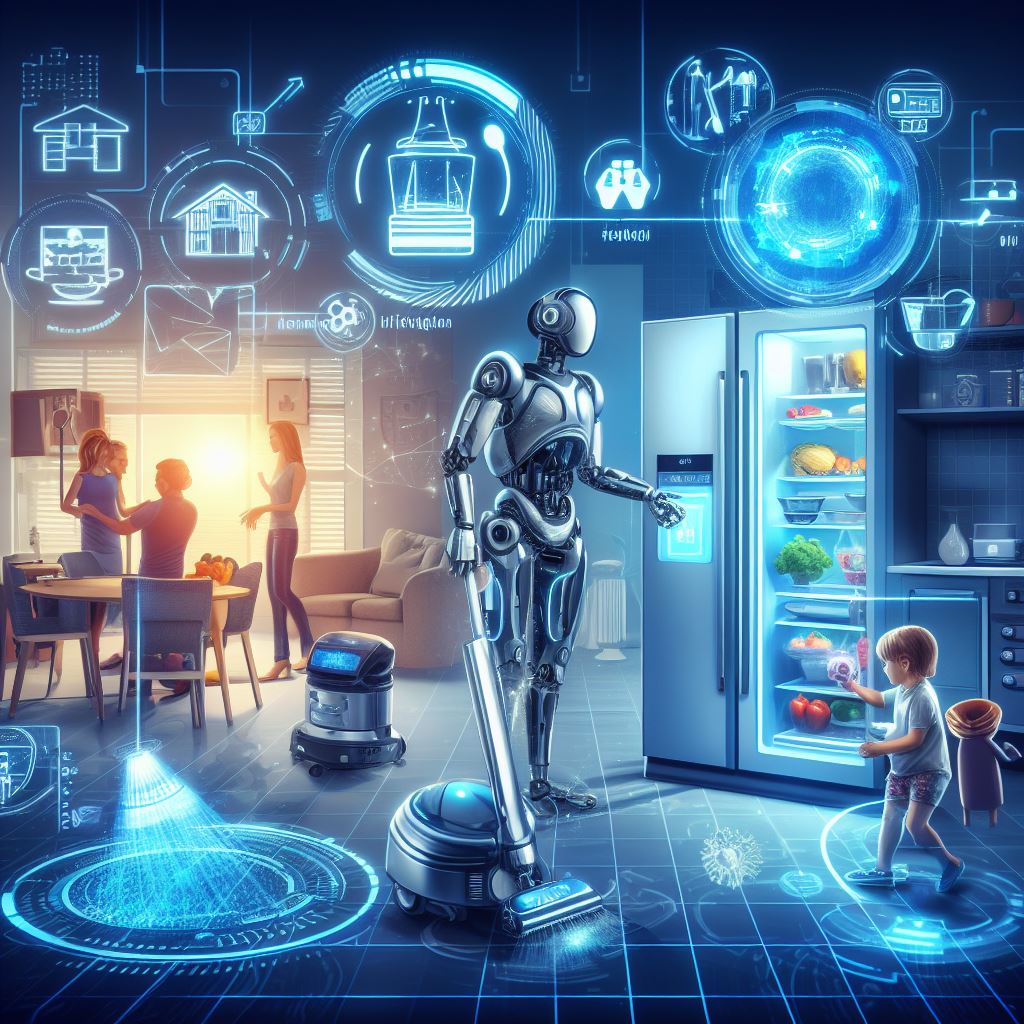
Revolutionizing Lifestyles: Navigating Robotics and Automation in Daily Life
Introduction
The age of robotics has dawned upon us, seamlessly integrating into our daily lives. Robotics, once deemed as the stuff of fiction, has rapidly evolved, merging with artificial intelligence (AI) and automation technologies to transform our homes, healthcare, and public spaces. This transformation isn’t merely a technological one; it brings with it societal shifts, economic recalibrations, and ethical challenges.
The Current Landscape of Robotics in Everyday Life
1. Robotics in Our Homes: Smart Living
-
Smart Homes: Modern residences equipped with automated systems, often labeled as 'smart homes', utilize robotics to enhance household management.
- Examples:
- Vacuum bots like Roomba making chores simpler
- Smart refrigerators that monitor food consumption and suggest recipes
- Automated security systems with facial recognition features
- Examples:
-
IoT Integration: With the integration of the Internet of Things (IoT), our homes have become more interconnected, elevating our living experience.
- Case Study: Google Nest, a product that interconnects various household devices, offering streamlined control to homeowners.
2. Healthcare: A Robotic Revolution
Robotics applications in healthcare have surged, offering precision and efficiency. * Examples: - Da Vinci Surgical System: A robotic surgical assistant ensuring greater precision during operations. - Rehabilitation bots assisting patients regain motor functions.
3. Robotics in Public Spaces
From malls to parks, robotics and autobots have become omnipresent. * Examples: - Cleaning bots in airports - Delivery drones dropping packages to customers
Economic and Employment Impacts of Robotics
Robotics, while ushering in efficiency, has also stirred debates on employment landscapes.
- Positives:
- Increased productivity
- Opening new fields and professions
- Challenges:
- Potential job displacements in sectors like manufacturing
- Re-skilling requirements for the workforce
Quote: Meredith Broussard, in her book "Artificial Unintelligence: How Computers Misunderstand the World", asserts, "While robots are brilliant at repetitive tasks, they lack the depth of human intuition." This brings to light the irreplaceability of human touch in many sectors.
Integration of AI and IoT with Robotics
The melding of synthetic intelligence with robotics has propelled innovation.
- Advancements:
- Human-robot interaction, augmented by AI, has become more intuitive and personal.
- Intelligent machinery, like voice assistants, make use of AI to understand and respond to user commands.
Societal and Ethical Implications of Widespread Automation
Robot Ethics: Navigating the Moral Compass
- Concerns:
- Decision-making abilities of robots in critical situations
- Privacy concerns with data collection
- The potential for misuse in surveillance and control
- Emotional attachments and dependencies on robots
Case Study: An examination of the MIT Press's "Robot Ethics: The Ethical and Social Implications of Robotics" sheds light on the need for a moral framework for our mechanical counterparts.
Predictions and Future Developments in Robotics
The future of human-robot interaction holds promise, but also uncertainty.
- Potential Developments:
- Personalized robot companions
- Widespread use of robots in eldercare
- Robots with capabilities to express and recognize human emotions
Quote: Byron Reese, in "The Fourth Age: Smart Robots, Conscious Computers, and the Future of Humanity", speculates, "In the future, robots might not just be tools, but entities we relate to on an emotional level."
Legal Framework and Policies Regarding Robotic Use
With the rise of mechanization, there's an imperative need for robust legal frameworks.
- Existing Policies:
- Regulations governing drone use in various countries
- Data protection policies for AI-driven bots
Reference: Various legal documents and white papers from governmental organizations provide insights into the existing regulatory landscape.
Conclusion
The age of robotics is here, permeating every facet of our lives. While the march of bots, be it in the form of autobots, cyborgs, or automated systems, brings forth a myriad of possibilities, it also demands introspection and ethical considerations.
To the tech enthusiasts, educators, policy makers, and the curious minds, the world of robotics beckons with its challenges and opportunities. As we navigate this automated age, continuous dialogue, anchored in respect for diverse viewpoints, remains our compass.
References:
For a deeper dive into the discussed topics, the following are recommended:
- "Robot Ethics: The Ethical and Social Implications of Robotics" (MIT Press)
- "The Fourth Age: Smart Robots, Conscious Computers, and the Future of Humanity" by Byron Reese
- "Artificial Unintelligence: How Computers Misunderstand the World" by Meredith Broussard
- Journals from "IEEE Robotics & Automation Magazine", "Journal of Robotics", and more.





